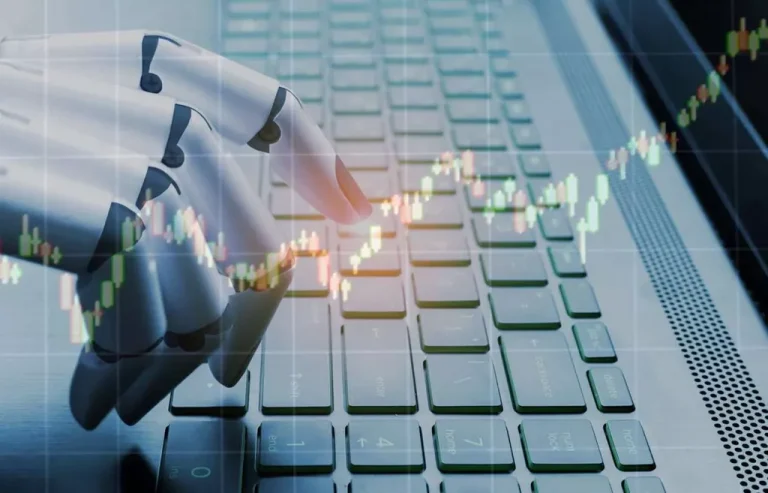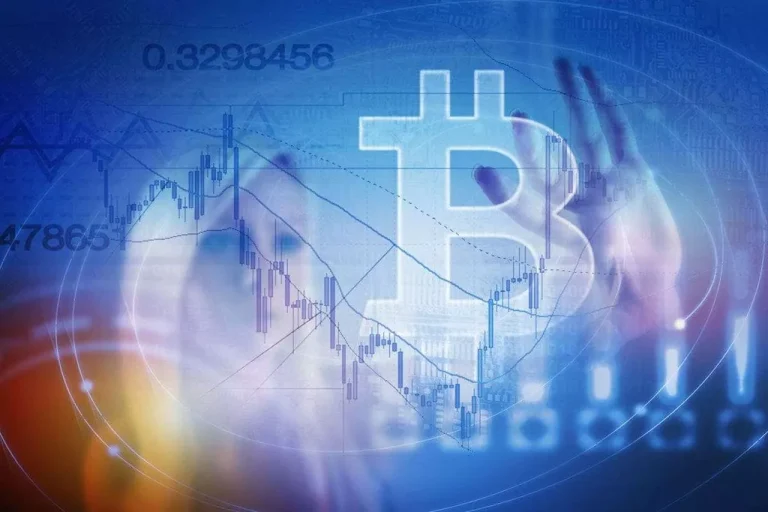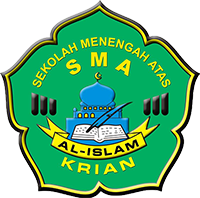- Pendaftaran Peserta Dididk Baru Smaliska Gelombang I sudah dibuka
Top Real World Assets RWA Coins by Market Capitalization
Content
Once the smart contract is created, the RWA tokens are issued on a blockchain-powered network, where they can be purchased in exchange for stablecoins or fiat currency. These limitations can hinder the efficiency and accessibility of investing in and managing RWAs. However, through Initial exchange offering the innovative approach of tokenization, these constraints can be overcome, paving the way for a more accessible and efficient ecosystem.
Advantages of Using RWAs in DeFi
Contact us today to begin your tokenization journey and bring your assets into the future of finance. With blockchain tech, you can see exactly who owns what, which helps prevent fraud and https://www.xcritical.com/ arguments over ownership. It’s like having a clear, unchangeable record of who owns what, which builds trust.

Unlocking Global Investment Potential for All
Regularly review and rwa crypto meaning rebalance your portfolio to align with changing market dynamics and your investment goals. And there are different tokenization licensing requirements for each type of RWA. Toby has worked as an editor at GoBankingRates, TD Ameritrade, Yahoo, MSN, and Storyful. Providing end-to-end services to facilitate the transition of Web2 companies into the Web3 ecosystem. You should not take any action before conducting your own research or consulting with a qualified professional.
Investor Protection and Security Concerns
The evolving world underscores the significance of initiatives aimed at integrating RWA crypto within the regulatory and fin systems. Artists, writers, and inventors can issue digital tokens representing shares in future revenues generated from their works. Platforms like ANote Music allow investors to bid on shares of music catalog royalties. At this stage, the dedicated development team builds a smart contract that defines and governs the RWA tokenization conditions. This covers the number of tokens, their value, as well as the rights and obligations of the token owners. Having learned the real-case products based on real-world assets and blockchain, our team was ready to implement the authentic RWA solution for one of our clients – Securitize.
Real-world asset tokenization is the process of virtualizing real-world (tangible and intangible) assets into digital tokens that can be stored, managed and traded on a blockchain. RWAs are tangible assets that exist in the physical world, such as real estate, commodities, and art. Despite their significance in traditional finance, these assets are hardly tapped into in the crypto world.
Different jurisdictions have different rules and regulations, making creating a standardized framework for RWAs tough. This lack of standardization limits the widespread adoption of tokenized RWAs, especially in highly regulated countries like the US. Establishing a universal framework is challenging but necessary for the global adoption of RWAs. As expected, there are some trade-offs when choosing between non-native and native tokens. Perspective-wise, non-native tokens offer the convenience of existing infrastructure, while native tokens provide full ecosystem control. Once the assets are listed on those platforms, their liquidity will enhance, thus providing investors with exit opportunities.
The tokenization of Real World Assets (RWAs) presents several compelling advantages that reshape investment strategies and the landscape of crypto finance. However, as the markets moved lower, DeFi TVL slumped to $49.87 billion by June 2022. The lack of real utility and poor tokenomics seen in some DeFi protocols certainly didn’t help their case, as liquidity leaked from the market. Before a real-world asset can be integrated into a digital ledger, its value, ownership, and legal standing must be unequivocally established in the physical world. Together, these innovations ensure efficient, secure, and cost-effective management of RWAs, driving mass adoption and bridging traditional and crypto markets. Reading through various best crypto exchange reviews online, you’re bound to notice that one of the things that most of these exchanges have in common is that they are very simple to use.
A legal framework is established to ensure that digital tokens represent a valid claim to the underlying RWA and the specific token rights are determined. So, although TradFi knows “RWA” to mean risk weighted asset, the DeFi industry now uses it to explain security tokens or asset backed tokens as well. As the cryptocurrency market continues to evolve, investors are constantly seeking the next big opportunity. We’ll discuss their use cases, recent news, and altcoin prices, helping you make an informed decision about which altcoin pay attention to. Despite the hopeful outlook, the acceptance of crypto RWA faces challenges such as regulatory compliance and market acceptance. Addressing these obstacles requires concerted efforts to standardize tokenization practices and enhance blockchain interoperability.
Integrating these assets can help DeFi evolve into an inclusive financial system that bridges traditional and crypto markets, offering investment options similar to traditional financial institutions. Integrating real-world assets into the crypto world, such as DeFi, reshapes the crypto landscape by making tangible assets more “liquid” and accessible. Exploring what is RWA in crypto reveals how these assets open new investment opportunities for a broader audience. Let’s discover how RWAs are transforming DeFi and the opportunities they present. When tokenizing real-world assets, as it involves the blockchain, two types of tokens will usually be produced.
Tokenized RWAs offer faster, global transactions without the restrictions of international borders and regulations. The consensus mechanisms in blockchain technology help in reducing dependence on third-party clearing agents such as conventional clearinghouses. On top of it, the public and immutable ledger of blockchain provides promising improvements in compliance and transparency. The decentralized ledger in blockchain technology provides complete visibility of asset ownership trail and transaction activity to facilitate clear provenance.

The Bank of America recently called RWA tokenization a “key driver of digital-asset adoption.” According to their report, the tokenized gold market has captured over $1 billion in investment. Treasury bonds, with the combined market capitalization of tokenized money market funds nearing $500 million, according to data compiled by CoinDesk. Most of us can’t afford to fork over record-breaking sums like $195 million for a Marilyn painting or even $850,000 for a mere print of Queen Elizabeth. Many people want to buy art either for pleasure or as an investment but are priced out.
- Contact us today to begin your tokenization journey and bring your assets into the future of finance.
- Real world assets or RWA in the domain of crypto represents the financial and physical assets in the real world.
- Tokenized RWAs are crucial for significantly expanding the digital asset sector as they enable the utilization of numerous assets not yet on the blockchain through blockchain infrastructure.
- Their protocol is integrated with major DeFi protocols across Polkadot and Ethereum, bridging the worlds of traditional and decentralized finance to unlock limitless markets.
Boston Consulting Group and ADDX project that the value of tokenized illiquid assets, including real estate, fine art, and commodities, could surpass $16 trillion by 2030. Dive into the dynamic world of RWA tokenization, a pivotal development in the cryptocurrency sphere. Grasp its immense potential, diverse use cases, and strategies to leverage this trend, particularly in the realm of tokenized real-world assets (RWAs). By linking tangible assets with their digital equivalents, RWAs facilitate a flawless melding of the real and digital realms. This advancement isn’t merely a fleeting phenomenon but marks a profound transformation in how assets are viewed, controlled, and traded, underscoring the critical role of RWA tokens and RWA coins in today’s financial arena.
Real-world assets not only democratize investment by lowering entry barriers but also by breaking down regulatory constraints. To illustrate, if you’re living in Asia, you can purchase the artwork of your favorite European artist in the form of an RWA crypto project. Energy Web has developed a comprehensive technology stack to facilitate this transition, including solutions like Data Exchange, Green Proofs, and Asset Management, powered by decentralized worker node networks. Blockchain can provide a transparent system for registering and transferring IP rights, which helps reduce disputes and simplifies licensing processes. Next, the tokenized asset must be audited to ensure no mistakes or loopholes exist. This typically involves third-party auditors who assess and verify the smart contract code used to tokenize the asset, the asset’s attributes, and its legal standings.
Explore what is RWA in crypto and how these real-world assets are transforming the digital landscape through tokenization and decentralized finance. In the scenario of tokenized loans, debtors are those who owe money under the loan agreements, and creditors are those who lend the money or hold the tokens representing the debt. Deciding on the type of token—whether fungible (identical and interchangeable) or non-fungible (unique and non-interchangeable)—is a critical step. This also involves selecting the blockchain technology that will host the token, such as Ethereum, Polkadot, or DeFiChain. Each offers different features that could benefit the tokenization process based on the asset’s requirements. The process of tokenizing Real World Assets (RWAs) involves several steps that translate physical or intangible assets into blockchain tokens.
The top RWA projects such as Maple Finance, RealT, Ethena and Ondo Finance offer distinct value propositions to offer new options for investors. Explore the details of other notable RWA crypto projects and find the right option for you right now. RWA tokenization revolutionizes the concept of asset ownership by transforming rights to real-world assets into digital tokens on a blockchain. This innovative process involves selecting an asset, such as real estate or stocks (collectively known as RWA real estate or RWA stocks), and establishing a robust legal framework to define ownership rights. Subsequently, security tokens are created on a blockchain to signify fractional ownership of these real-world assets (RWAs). Digital tokens on the blockchain, known as tokenized real-world assets (RWAs), are a representation of physical and traditional financial assets like cash, commodities, stocks, bonds, credit, art, and intellectual property.
0 Komentar


Beri Komentar